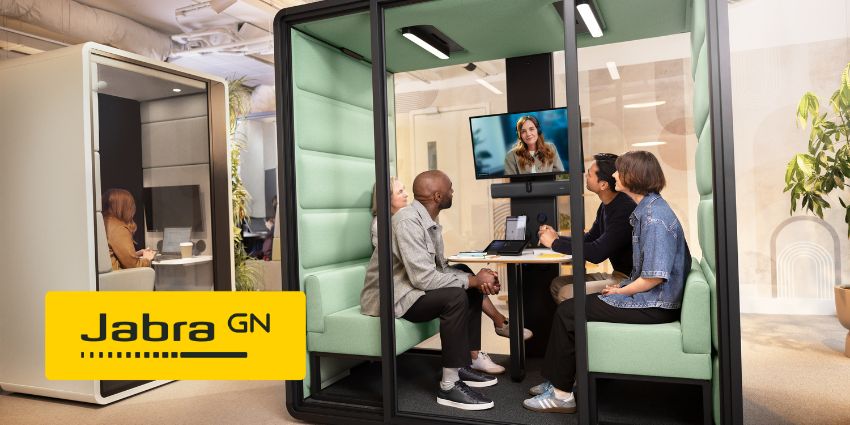As InfoComm 2025 approaches, industry leaders are turning their attention to the technologies, trends, and challenges reshaping AV. Sean Wargo, VP of Market Insights at AVIXA, joined UC Today to unpack the latest data and offer a forward-looking view of what’s driving the sector. From software shifts to hybrid work transformations, here are the seven most important takeaways.
The Pro AV Market Is Slowing, But Still Growing
After a post-pandemic boom, the AV industry is cooling to a more sustainable pace. “It’s a bit of a mixed bag,” Wargo explained. “Growth is slowing somewhat due to a few headwinds – tariffs, lingering supply chain issues, and a continued talent shortage.”
According to AVIXA’s latest research, these pressures have led to a slightly softer growth forecast for 2025. But the good news? Momentum is still strong in key solution areas. “We’re not seeing a drop-off in demand, just a recalibration,” Wargo added.
Collaboration Tech Remains the Industry’s Powerhouse
If there’s one segment bucking the slowdown, it’s collaboration. “We’re seeing a surge in scalable, intelligent, and affordable solutions,” Wargo said, “especially for meeting rooms, classrooms – really, any shared space.”
As companies continue to navigate hybrid work models, collaboration tools are central to the journey. “Many organisations are still figuring out how best to return to the office,” he noted. “That creates huge demand for technologies that support connection, flexibility, and productivity.”
Meeting Rooms Are Smarter and More Standardised
Meeting room technology is evolving fast and becoming more uniform across enterprises. “It starts with platforms,” Wargo explained. “We’ve seen the rise of unified platforms that can be replicated across rooms and sites, giving organisations a consistent toolkit for collaboration.”
These platforms now feature AI-enhanced capabilities: smart cameras that follow speakers, adaptive microphones that tune to the room, and systems that auto-optimise for different meeting formats.
“AI plays a big role here,” he said, “though what we now call ‘AI’ is often the refinement of existing algorithms. Still, the impact is real—it’s making systems smarter, installs easier, and experiences better.”
Broadcast-Quality AV Is No Longer Niche
One of the most striking shifts is the mainstreaming of broadcast AV. “It used to be a studio-only thing,” Wargo noted. “Now, it’s extending into collaboration, education, and even corporate communications.”
Organisations want higher production values for town halls, investor updates, and internal events. “They’re saying, ‘This can’t just be a Zoom call—we want it to look professional,’” he said.
The result? AV setups that include high-end cameras, green screens, lighting rigs, and even elements of virtual production. “It’s blurring the lines between traditional AV categories,” Wargo added. “For solution providers, that’s both a challenge and a growth opportunity.”
Software Is Quietly Revolutionising the Industry
While flashy displays and hardware upgrades still grab attention, Wargo emphasised that the “real story is in the backend.”
“Software is one of the fastest-growing segments in our annual forecast,” he said. “With tariffs impacting hardware, there’s a pivot toward solving more through software and cloud services.”
From remote diagnostics and system updates to AI-enhanced content creation, software is enabling managed services and long-term support models. “This is what’s making AV scalable and serviceable in a way it wasn’t before,” he explained.
AV Is Powering the Smart, Flexible Office
Far from being a casualty of the remote work era, office spaces are being reimagined with AV at the core. “There was this fear of a mass exodus from office real estate,” Wargo said. “But the data shows otherwise – leased space didn’t really decline in the US.”
Instead, companies are re-investing in flexible, multi-purpose spaces. “From huddle rooms to open areas, they want AV that supports a range of uses,” he explained. “That means strategic placement of mics, speakers, lighting, and displays to accommodate everything from impromptu meetings to broadcast-grade presentations.”
Wargo underscored that collaboration remains the largest solution area in AV, and for good reason. “It’s fundamental to how modern work gets done.”
InfoComm 2025 Will Be a Showcase for AV’s Resilience and Reinvention
Looking ahead to the show, Wargo and his team are gearing up to share key research findings. “We’ve got our Market Insights Luncheon on Tuesday – definitely register early for that, it fills up fast,” he said.
AVIXA will also be hosting sessions on tariffs, supply chains, and fast-emerging trends like broadcast AV. “We’ll be on the main and spotlight stages, diving into the real drivers of industry change,” he said.
But for Wargo, the real value of InfoComm is experiential. “It’s always great to feel the energy, seeing new tech, connecting with peers, and getting inspired by what’s next.”
Final Word
AV is no longer just about what’s in the room but about the infrastructure, the experience, and the intelligence behind it.
From smarter collaboration tools to the rise of software-driven ecosystems, the industry is entering a new era, and InfoComm 2025 aims to capture it all.







